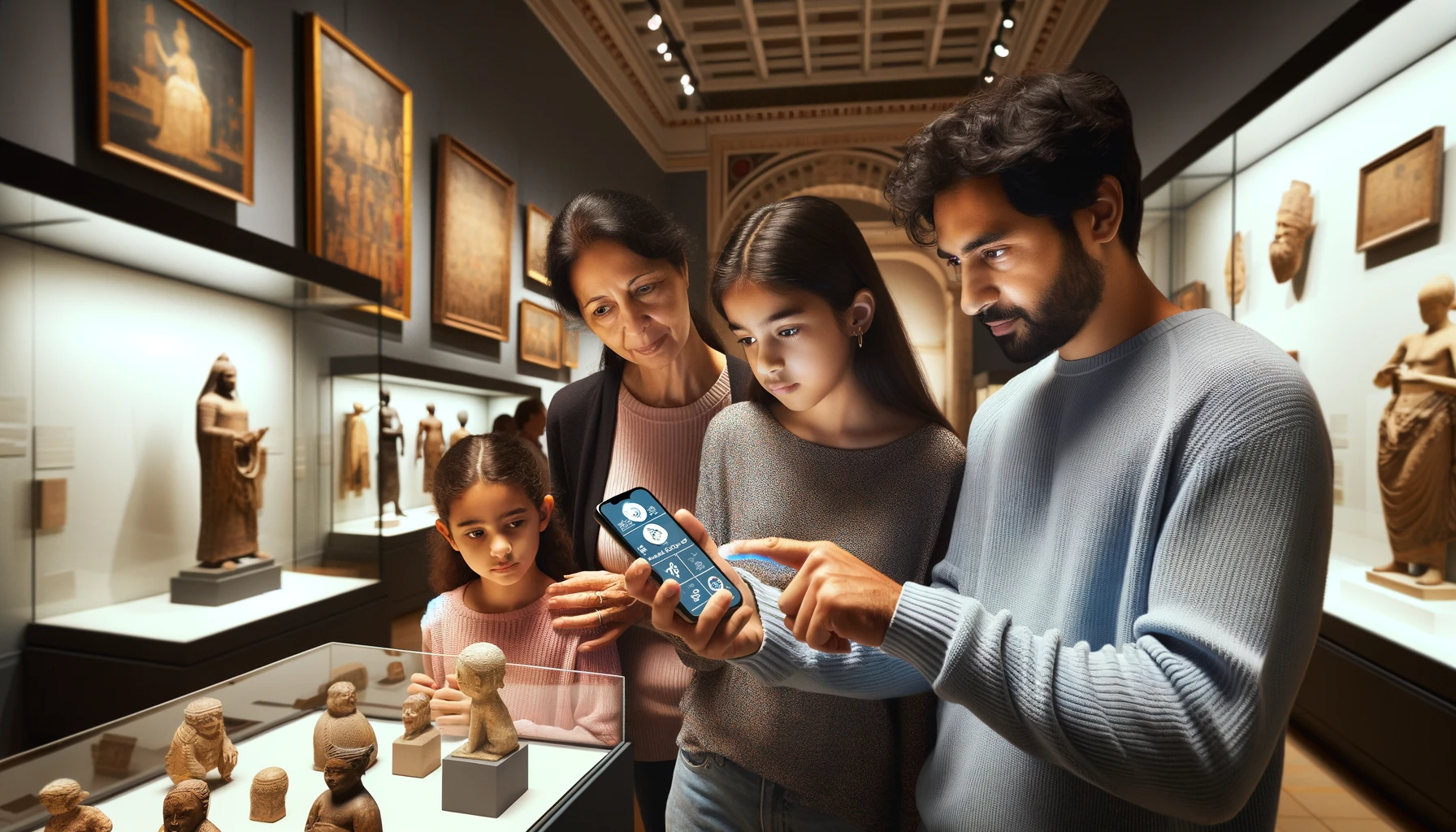As we step into 2024, museums worldwide are undergoing a significant transformation in the way they engage with visitors. With advancements in technology and a growing appetite for immersive experiences, the state of digital experiences in museums is evolving rapidly. In this article, we will explore how AI, mobile devices, immersive audio-visual projections, and augmented reality (AR) are poised to become pivotal players in the future of visitor experiences in museums.

The Rise of AI-guided Tours
One of the most prominent developments in the museum world is the integration of artificial intelligence (AI) into visitor experiences. AI-guided tours are becoming increasingly popular, offering visitors a personalized journey through exhibitions. AI-driven algorithms analyze visitor preferences and interests, curating a unique tour route that aligns with their preferences. Moreover, AI can provide in-depth information about artifacts, artworks, and historical contexts, enriching the visitor’s understanding and engagement.
Mobile Devices as Personal Companions
Mobile devices, particularly smartphones and tablets, are becoming indispensable tools for enhancing museum visits. Museums are developing dedicated mobile apps that provide visitors with a wealth of information, interactive exhibits, and augmented reality experiences. These apps can offer multimedia content, including videos, audio guides, and 3D models, giving visitors a deeper and more immersive understanding of the exhibits.
Immersive Audio-Visual Projections
Immersive audio-visual projections are redefining how museums tell stories and engage with their audiences. Projection mapping, a technology that uses projectors to display images and videos on irregular surfaces, is being employed to transform museum spaces into dynamic, ever-changing environments. These projections can breathe life into static displays, creating visually stunning and emotionally resonant experiences that captivate visitors.
For instance, a historical diorama can be brought to life through projected animations and soundscapes, transporting visitors to a different time and place. This merging of the physical and digital realms creates an immersive narrative that leaves a lasting impact on museum-goers.
Augmented Reality: Bridging Past and Present
Augmented reality (AR) is poised to play a pivotal role in the future of museums. AR applications enable visitors to interact with exhibits in real-time by overlaying digital information onto the physical world. This technology bridges the gap between past and present, offering a new layer of historical context and interactivity.
Imagine standing in front of an ancient artifact and using your AR-equipped device to see a 3D reconstruction of how it appeared in its original state. AR can also facilitate gamified experiences within museums, encouraging exploration and learning through interactive challenges and quests.
The Power of Accessibility and Inclusivity
The digital transformation of museums is not only about enhancing visitor experiences but also promoting accessibility and inclusivity. Digital technologies can make exhibits more accessible to individuals with disabilities. For example, AI-driven audio descriptions and sign language interpretation can ensure that all visitors can engage with the content.
Moreover, museums are increasingly embracing virtual reality (VR) to provide remote access to their collections. This allows individuals from around the world to explore museum exhibits and artifacts, transcending geographical boundaries and making cultural heritage more accessible than ever before.
Conclusion
As we enter 2024, the state of digital experiences in museums is marked by innovation and transformation. AI-guided tours, mobile apps, immersive audio-visual projections, and augmented reality are reshaping the way visitors engage with cultural institutions. These technologies not only enhance the visitor experience but also promote accessibility, inclusivity, and a deeper understanding of our shared cultural heritage.
Museums that embrace these digital advancements are poised to captivate and educate a new generation of visitors, ensuring that the appreciation of art, history, and culture remains vibrant and relevant in our increasingly digital world. The future of museums is undoubtedly digital, and the possibilities for creating unforgettable visitor experiences are boundless.
Museum Conferences to Attend in 2024
Here are some conferences and events that have traditionally included topics related to digital experiences in museums:
- MuseWeb (formerly Museums and the Web): MuseWeb is one of the premier conferences dedicated to the intersection of museums and technology. It covers various aspects of digital experiences, including virtual reality, augmented reality, interactive exhibits, and more.
- MCN (Museum Computer Network) Annual Conference: MCN’s annual conference brings together museum professionals, technologists, and researchers to discuss digital strategies, digital preservation, and emerging technologies in the museum field.
- American Alliance of Museums (AAM) Annual Meeting: AAM’s annual meeting often includes sessions and discussions on digital engagement, including topics like mobile apps, digital storytelling, and online collections.
- MuseumNext: MuseumNext is a global conference series that explores innovation, technology, and digital experiences in museums. It covers various aspects of museum management and includes discussions on digital engagement.
